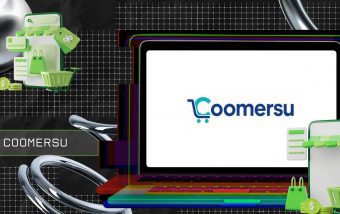Real Estate Link Building That Actually Works: Earn Local Authority, Rankings, and Better Leads Without Spam
Dec 10, 2025

Dec 10, 2025

Dec 10, 2025

Dec 09, 2025

Dec 09, 2025

Dec 05, 2025

Dec 05, 2025

Dec 04, 2025

Dec 04, 2025
Sorry, but nothing matched your search "". Please try again with some different keywords.


Pain management’s one of those things that sounds routine — until you’re the one in pain. Whether it’s after surgery or from something chronic that just won’t quit, you start realizing how slow some medications can be.
Pills can take 30 minutes or more to start helping. IV pain management cuts that wait time down a lot.
Instead of going through your stomach and liver, the medication enters directly into your bloodstream. That’s why it kicks in so fast.
IV lidocaine is one of the main drugs used in this type of treatment. It basically blocks nerve signals from screaming “ouch!” to your brain. Simple idea, but powerful stuff.
That said, every treatment has two sides — the good and the not-so-good. IV pain management’s no different.
So, in this blog, I am going to delve deep into the various aspects of IV pain management risks and benefits by exploring—
So, keep reading to know more!
Alright, so here’s the gist. IV pain management means your doctor or nurse puts an IV line into your vein — usually in your arm — and gives you pain medicine through it.
This bypasses your digestive system completely. Since it’s going straight into your bloodstream, it starts working almost immediately.
For people who need relief quickly — think post-surgery pain, severe injury, or even chronic nerve pain like fibromyalgia — it’s a lifesaver.
And when we talk about IV lidocaine, it’s not just numbing a single spot like at the dentist’s office. It’s calming the entire nervous system response that’s causing pain.
I’ve seen patients go from grimacing in pain to relaxed in minutes. It’s that fast sometimes.
IV pain management offers countless benefits for all kinds of patients. So, here are some of its common benefits listed below—
No question about it — speed is the big one here. Oral meds need time to digest. IV meds? Not so much.
Once that medication’s in, you can often feel a difference within minutes. When someone’s in acute pain, that time matters a lot.
Here’s another reason IV therapy’s becoming popular: control. With pills, dosage is a bit of a one-size-fits-all situation.
But IV treatment allows your healthcare provider to give you exactly what you need — not too much, not too little.
We can even adjust it mid-treatment if necessary, which is a big deal when managing pain effectively.
This surprises people, but IV pain management can actually lead to fewer side effects than oral medications.
Since the medicine isn’t being broken down by your stomach or liver, it often feels “cleaner.”
For example, with IV lidocaine, you’re less likely to deal with nausea or that heavy, drowsy feeling that comes with some oral painkillers.
If you’ve been living with pain that just doesn’t quit — neuropathy, fibromyalgia, or nerve-related pain — IV lidocaine can sometimes help where other meds fall flat.
It doesn’t “cure” anything, but it calms down hypersensitive nerves, and that can make day-to-day life a lot easier.
Let’s be real — with everything we know about the risks of opioids, finding effective non-opioid options is a huge win. IV lidocaine offers just that.
No risk of dependency, no “foggy head” feeling. For a lot of people, that alone makes it worth considering.
Now, before you jump in, it’s important to know it’s not for everyone — and yes, it has risks. Nothing in medicine is completely risk-free.
Allergic reactions are rare, but they happen. A few people may develop swelling, rash, or breathing issues.
If you’ve ever had a weird reaction to anesthesia or numbing meds, definitely mention it to your doctor beforehand. We always test and monitor carefully.
Too much lidocaine in your system can be dangerous. It’s uncommon, but if it happens, symptoms might include dizziness, blurred vision, or ringing in the ears.
That’s why you’re never left alone during the infusion. Medical teams monitor you closely, so things stay safe.
Here’s one people don’t always expect — lidocaine can affect heart rhythm, especially in high doses. It’s not common, but it’s why we hook patients up to monitors during treatment.
If you’ve got a heart condition, this is something your provider will evaluate before going ahead.
Sometimes you might notice redness or mild swelling where the IV went in. It’s usually harmless and fades within a few hours. Still, if it lingers or gets worse, mention it right away.
This one’s crucial — IV lidocaine isn’t ideal for everyone. People with heart or liver issues, certain allergies, or pregnant women might need to skip it.
Always talk openly with your doctor before deciding. It’s better to double-check than risk complications.
With growing technological applications in the healthcare industry, AI is also being used for IV pain management. Moreover, AI helps in enhancing the precision and personalization of the pain management procedures.
That is, it monitors the diagnostic images and physiological markers to identify the best procedures for managing pain. So, medical professionals can employ them faster and improve patient recovery.
In addition to this, AI technology can assist in creating tailored treatment plans and predict the pain outcomes for individual patients. So, this can avert the risks and considerations while applying IV pain management for different patients.
Here’s the thing — IV pain management can be life-changing for the right person. It’s quick, precise, and often easier on your system than oral meds.
IV lidocaine especially stands out because it works well without the dangers of opioids.
But, and this is important, it’s not a magic fix. There are real risks involved — allergic reactions, overdose (rare but serious), and mild side effects like irritation at the injection site.
The safest way to approach it is by working with a provider who knows exactly what they’re doing.
When handled properly, IV pain management can bring real relief — not just physically, but emotionally too.
Because when pain finally eases up, everything else in life starts feeling possible again.

Real Estate Link Building That Actually Works...
Dec 10, 2025
Why Health-Conscious Consumers Choose Blockch...
Dec 10, 2025
How To Buy Xupikobzo987Model? Decoding The Mo...
Dec 09, 2025
Workplace Management EWMagWork: Is This Smar...
Dec 09, 2025
Social Media Stuff EmbedTree: Is This Digita...
Dec 05, 2025

